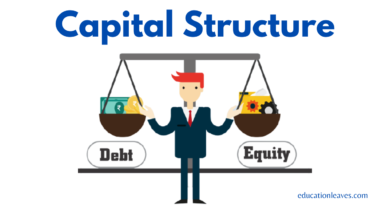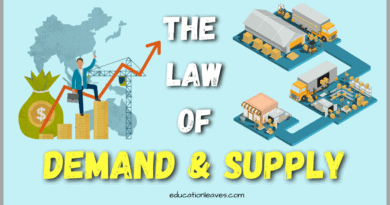Difference Between Sales and Marketing [PDF Included]
sales and marketing are two major pillars of every business. They are closely related and function as a catalyst for generating profit in the business. Marketing is about creating awareness about a brand or an organization and sales turn that viewership into revenue by converting the potential consumers into actual consumers. Understanding the dissimilarities between sales and marketing can help you implement them better to achieve your organization’s revenue goals.
What you are going to learn?
Why We Should Understand the Difference Between Sales and Marketing
As you need to integrate both sales and marketing functions in your organization, it is important to understand clearly the differences between sales and marketing. Understanding the differences between them helps you fit them perfectly in your organization in order to increase revenue. You need to make a proper allocation for each function of your business while preparing an organizational budget. Continue reading to closely understand sales and marketing and how they differ from each other.
What are Sales?
Sales refer to all activities involved in selling a product or service to a business or a consumer.
It involves convincing customers to buy from your enterprise. The convincing can be through different means such as demonstrating your product’s benefits, giving discounts or creating your product more attractive than the same category product of your competitors. Some typical methods of sales generation include making cold calls, doing one-on-one meetings with business leads, participating in trade fairs and other promotional events, etc.
What is Marketing?
Marketing is the technique of making people interested in your product through various strategies like packaging, positioning (creating a perception), pricing, arrangement, and advertising.
The marketing efforts of a company focus on generating direct sales leads, but they should intend to make sales easier and increase income over a longer time span.
Marketing team work on creating a brand image and improving public relations. It will help in not only generating direct sales leads but also influences customers to make a purchasing decision in favor of the company’s products.
Now let’s discuss various differences between sales and marketing;
1. Difference Between Sales And Marketing Types
Types of Sales:
- B2B (Business-to-Business) Sales: In includes businesses that sell goods and services to other businesses requiring them. B2B transactions generally have a higher selling value and more complicated terms.
- B2C (Business-to-Consumer) Sales: It focused on engagements between a business and its customers. B2B sales allow businesses to interact directly with customers who need their products and services.
- Enterprise Sales or Complex Sales: It is when you sell your products and services to large enterprises. B2B sales can become enterprise sales when the stakes are high enough.
- SaaS (Software-as-a-service) Sales: It refers to the process of selling your company’s web-based software to clients. Your clients may include companies as well as individuals.
- DTC (Direct-to-Consumers) Sales: It refers to a product creator directly selling their items to consumers. Most of these sales take place through online stores.
- Direct Sales: There are two types of direct sales;
- Single level: In this particular type, the seller makes money by purchasing products from a parent organization and selling them directly to consumers.
- Multi Level: Multi-level marketing refers to a seller making money by selling their products to consumers or making their consumer a new direct seller.
- E-Commerce Sale: It is generally selling goods and services over an electronic network or internet. These business transactions occur either as B2B or B2C.
Types Of Marketing:
- Social Media Marketing: this type of marketing uses social media platforms like Facebook, Twitter, Instagram, and YouTube to foster reach customers across the nation and foster relationships with them. Through social media marketing, brands and businesses can communicate with the masses in a more personalized way.
- Email Marketing: Sending an email that contains a commercial message to a large group of people is called email marketing. It is the act of sending an email to a current or prospective customer. Email marketing’s aim is to build brand awareness, trust, and loyalty.
- Influencer Marketing: Someone with many followers and a fanbase on any social media platform is called an influencer. When you use influencers to promote your brand and product, that is called influencer marketing. Nowadays, it is a trending and effective marketing strategy.
- Database Marketing: Company collects the data of both customers and potential customers and then uses those consumer data to produce targeted, automated communications for customers.
- Event Marketing: Event marketing is basically promoting your products, services, and brands during promotional events. Event marketing represents how the company operates, potential attractiveness, shortcomings, etc.
- Product Marketing: Product marketing is basically bringing a new product or service to market strategically and communicating its value both externally to the market and internally within the enterprise.
![Difference Between Sales and Marketing [PDF Included]](https://educationleaves.com/wp-content/uploads/2022/08/pngwing.com_-1024x629.png)
2. Difference Between Sales and Marketing Goals
Both sales and marketing processes focus on generating revenue. But, sales mainly focus on short-term goals, whereas marketing has a relatively long-term perspective.
Let’s discuss the differences between sales and marketing;
Sales Goals:
- Increase monthly revenue.
- Retain existing customers.
- Lower customer acquisition cost.
- Increase profit margin.
- Close sales.
Marketing Goals:
- Launch a new product.
- Build a brand.
- Research customer needs.
- Enhance product awareness.
- Better customer satisfaction.
- Generate Qualified Leads.
- Maintain customer relationships.
3. Difference Between Sales and Marketing Process
![Difference Between Sales and Marketing [PDF Included]](https://educationleaves.com/wp-content/uploads/2022/08/pngwing.com-2.png)
Sales Process:
Here are some steps involved in the sales process;
- Create a list of target customers and do research on them.
- Connect with your prospects through phone calls and emails.
- Sort your list based on their response, and the need to buy your product.
- Schedule a meeting with sorted leads.
- Show your product and give a demonstration of your product features and benefits.
- Listen to your prospect’s complaints, and recommendations, address their concern, and understand their perspective.
- Close a deal by negotiating the price, and creating a proposal.
- Deliver the product and help customers to get started.
- Support your customers with after-sales service.
- Make your customers buy your products and services repeatedly.
Marketing Process:
- Study your potential customers and the market.
- Split your customers into different segments based on their interests.
- Build a marketing strategy for the segment you target.
- Highlight the unique features of your products in your marketing campaigns.
- Run the marketing campaigns.
- Monitor the performance of your marketing campaigns.
- Modify and tune your campaign based on their performance if required.
4. Difference Between Sales and Marketing Strategies
Here are some examples of sales and marketing strategies;
Sales Strategies:
- Door-to-door sales: In the door-to-door sale process, sales representatives visit prospects at their homes or offices to sell products or services.
- Cold Calling: It is one type of business practice in which contacting a potential customer via phone call who has not expressed interest in speaking with a customer service representative or making a purchase.
- Free Trial: Free Trial is the way to present the true value of the product as businesses don’t easily invest in an unknown product. But most importantly, you need to confirm that your free trial period isn’t extended for too long.
- Discount Selling: Companies offer attractive discounts on some products for a limited period to attract buyers and help them to make a purchasing decision.
- Discount Coupon: Sometimes companies provide discount coupons to the customers when they book something or pay online. These coupons will help buyers to make purchasing decisions easier.
- Cross-Selling: When a company sells more items to their existing customers, that is called cross-selling. The best example of cross-selling is a bank selling insurance or credit cards to their savings account holder.
Marketing Strategies:
- Price-Focused Marketing: Attractive pricing is the best way to attract customers. Companies fix the prices of their products according to the quality; low pricing for low-quality products, price matching for mid-category or competitive products, and premium pricing for the best quality products.
- Online Marketing: Companies promote their products via various social media platforms, search engines, and emails.
- Product-Focused Marketing: Highlighting the various aspects of the product such as size, packaging, and quality. Considerably better packaging and bigger size attract the buyer most.
- Status Marketing: When a company positions its product as a symbol of status and reserves the right to sell those to selective customers like businessmen, influential people, high net worth individuals, etc. that is called status marketing.
Key Takeaways
- Sales are the delivery of products from the manufacturer to consumers in exchange for money and marketing is basically understanding the customer’s need and introducing products accordingly.
- Sales basically follow a fragmented and product-oriented approach, whereas marketing follows an integrated and customer-oriented approach.
- Sales focus on maximizing the seller’s profit but marketing focuses on generating profit through customer satisfaction.
- Sales follow the push strategy and marketing follows the pull strategy.
- The target audience of sales is both individuals and organizations, moreover, the target audience for marketing is the public.
- The primary objective of sales is to influence the target audience to become a buyer, and the primary objective of marketing is to identify customers’ needs and make products accordingly.
- Good communication and selling skills are required for sales whereas good analytical skills are required for marketing.
- Marketing focuses on building long-term relationships with customers, whereas, sales refers to the ultimate outcome of marketing.
Sales Vs Marketing PDF
https://hitpcgames.com/ https://www.majidsaleem.com/ https://keygensoft.com/ https://windowscrack.net/ https://yellowcrack.com/




